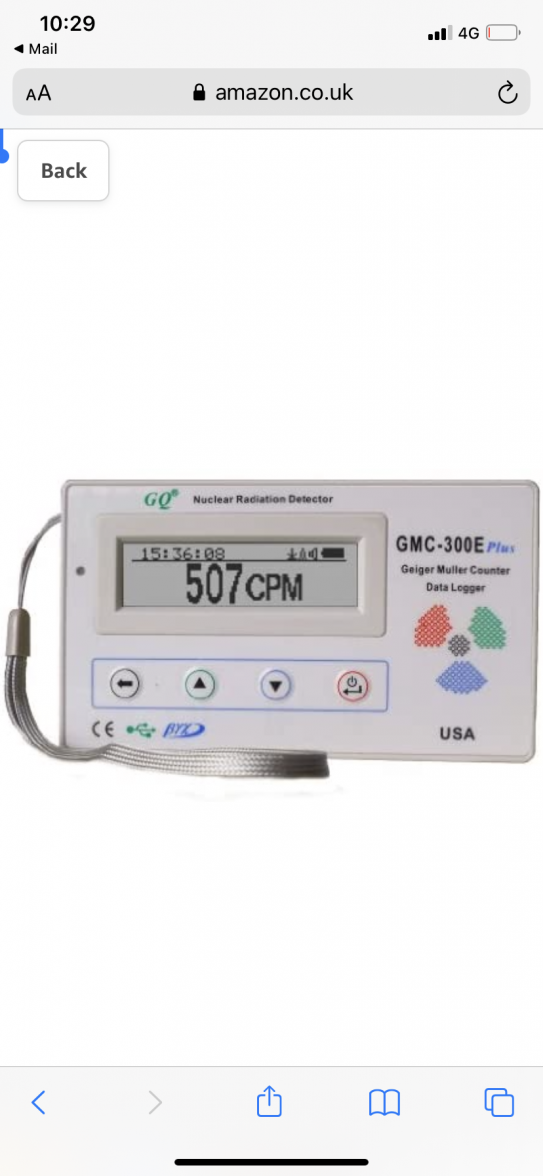Davidt
·Evening all.
Does anyone have any idea what late tritium (80’s/90’s) dials/hands register in a Geiger counter?
Ive recently bought a vintage Omega with incorrect hands. I assumed tritium as 1) who would replace the hands on a late 60’s Omega with old radium hands, and 2) the lume is quite a pale shade, not the yellow you usually associate with radium.
However, when placed next to my Geiger, the readings increase from background (c.0.05-0.12 uS/hr) to around 0.30uS/hr. This seems too low to be radium but somethings making the reading increase. With a half life of around 12 years, would new-ish tritium give these results?
Note-crystal was in place as was caseback. Counter was placed directly on top of crystal.
Does anyone have any idea what late tritium (80’s/90’s) dials/hands register in a Geiger counter?
Ive recently bought a vintage Omega with incorrect hands. I assumed tritium as 1) who would replace the hands on a late 60’s Omega with old radium hands, and 2) the lume is quite a pale shade, not the yellow you usually associate with radium.
However, when placed next to my Geiger, the readings increase from background (c.0.05-0.12 uS/hr) to around 0.30uS/hr. This seems too low to be radium but somethings making the reading increase. With a half life of around 12 years, would new-ish tritium give these results?
Note-crystal was in place as was caseback. Counter was placed directly on top of crystal.

